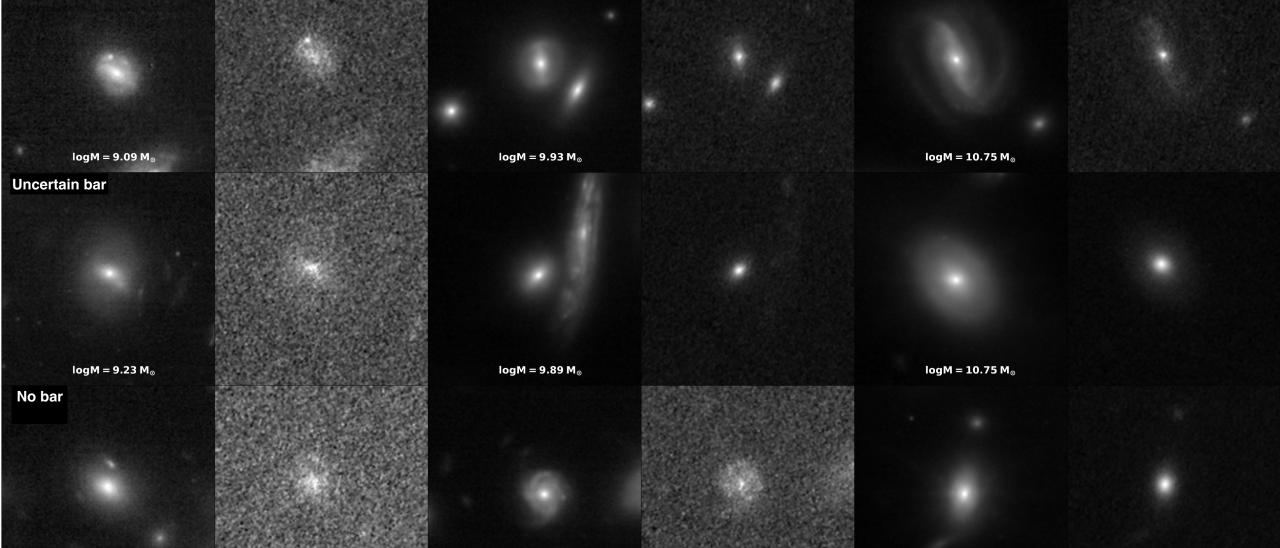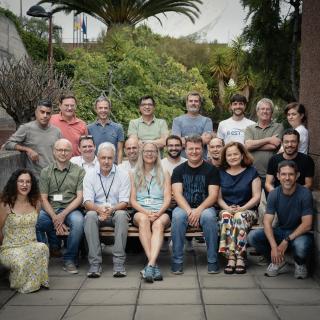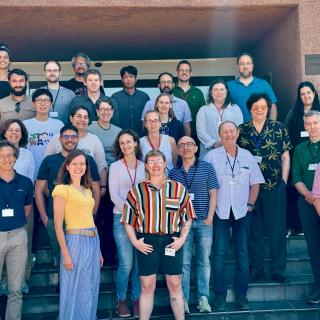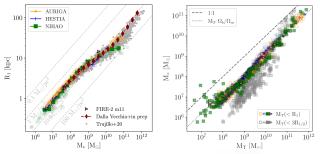The cosmic evolution of the barred galaxy population provides key information about the secular evolution of galaxies and the settling of rotationally dominated discs. We study the bar fraction in the SMACSJ0723.37323 (SMACS0723) cluster of galaxies at z = 0.39 using the Early Release Observations obtained with the NIRCam instrument mounted on the JWST telescope. We visually inspected all cluster member galaxies using the images from the NIRCam F200W filter. We classified the galaxies into ellipticals and discs and determine the presence of a bar. The cluster member selection was based on a combined method using both the available spectroscopy and the color-magnitude relation.
As has previously been found in nearby galaxy samples, we find that the bar fraction distribution of SMACS0723 is a strong function of the galaxy stellar luminosity (or stellar mass). The analogy with local clusters, such as Virgo and Coma, reveals a similar distribution among the three clusters for low-mass galaxies (log(Mstars) ≤ 9.5). The comparison with a sample of local galaxies in a field environment shows a remarkable lack of bars in this low-mass regime for the SMACS0723 cluster (and, therefore, in Virgo and Coma) with respect to the field. At high masses (log(Mstars) ≥ 10.25), galaxies in SMACS0723 show a slightly lower bar fraction than those in Coma. At these high masses, we find a much larger bar fraction in SMACS0723 than previous works on field galaxies at z = 0.4. Nevertheless, the difference is only marginal when we compare with a sample of well-resolved local field galaxies. Thus, we suggest that the improved capabilities of JWST with respect to HST in terms of both spatial resolution and image depth are responsible for the higher bar fraction we obtained.
Our results support a scenario where the cluster environment affects the formation of bars in a mass-dependent way. At high masses, the mild increase in the bar fraction of local clusters (Coma) with respect to both SMACS0723 and local field galaxies suggests a weak effect coming from the cluster environment possibly triggering bar formation. On the other hand, low-mass galaxies show the same bar fraction in the three clusters (different redshifts) and a significant drop with respect to field galaxies at z = 0, thus suggesting that: (i) the bar fraction of low-mass galaxies in clusters is not evolving during the last 4 Gyr; and (ii) bar formation is severely inhibited in low-mass galaxies residing in clusters.



